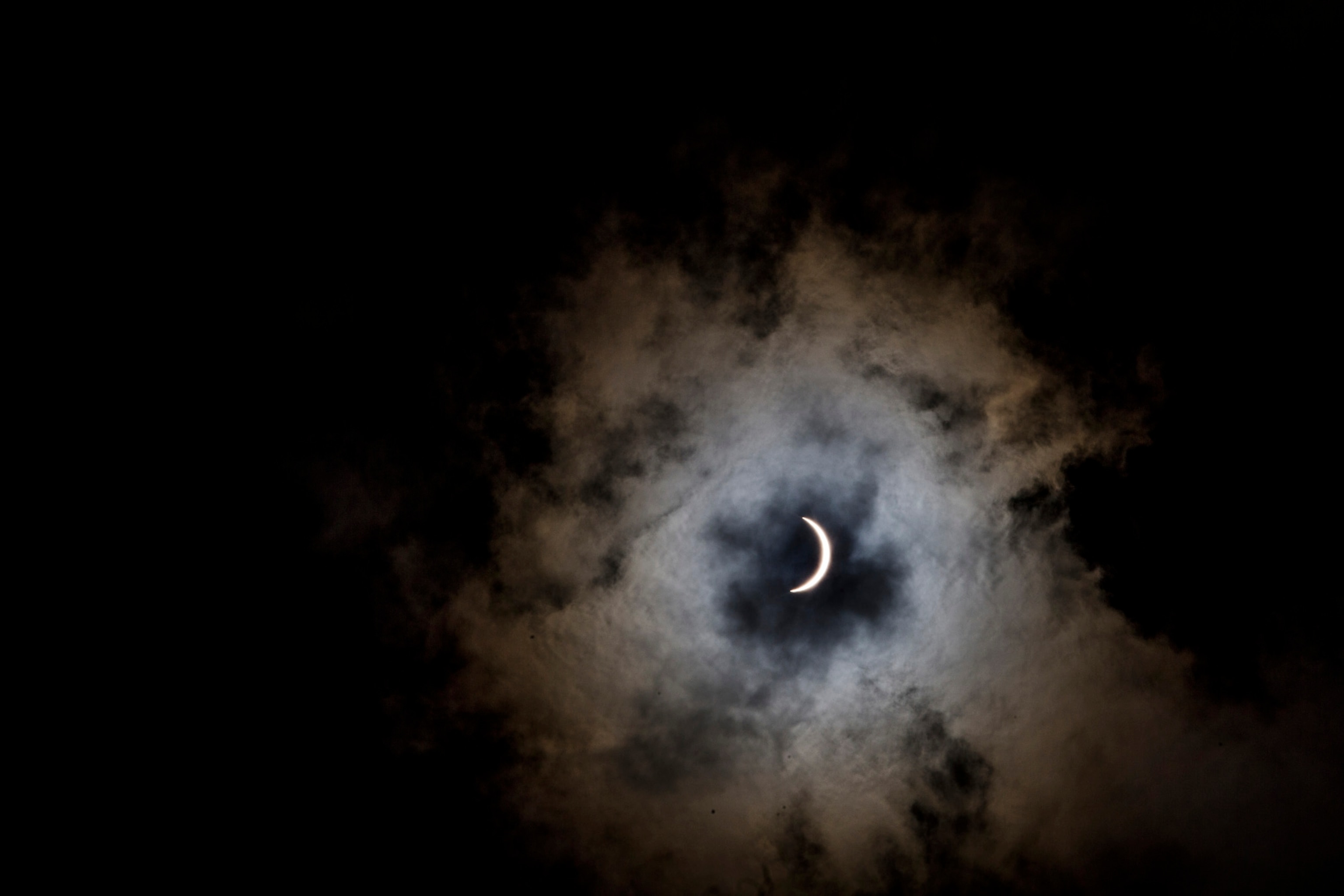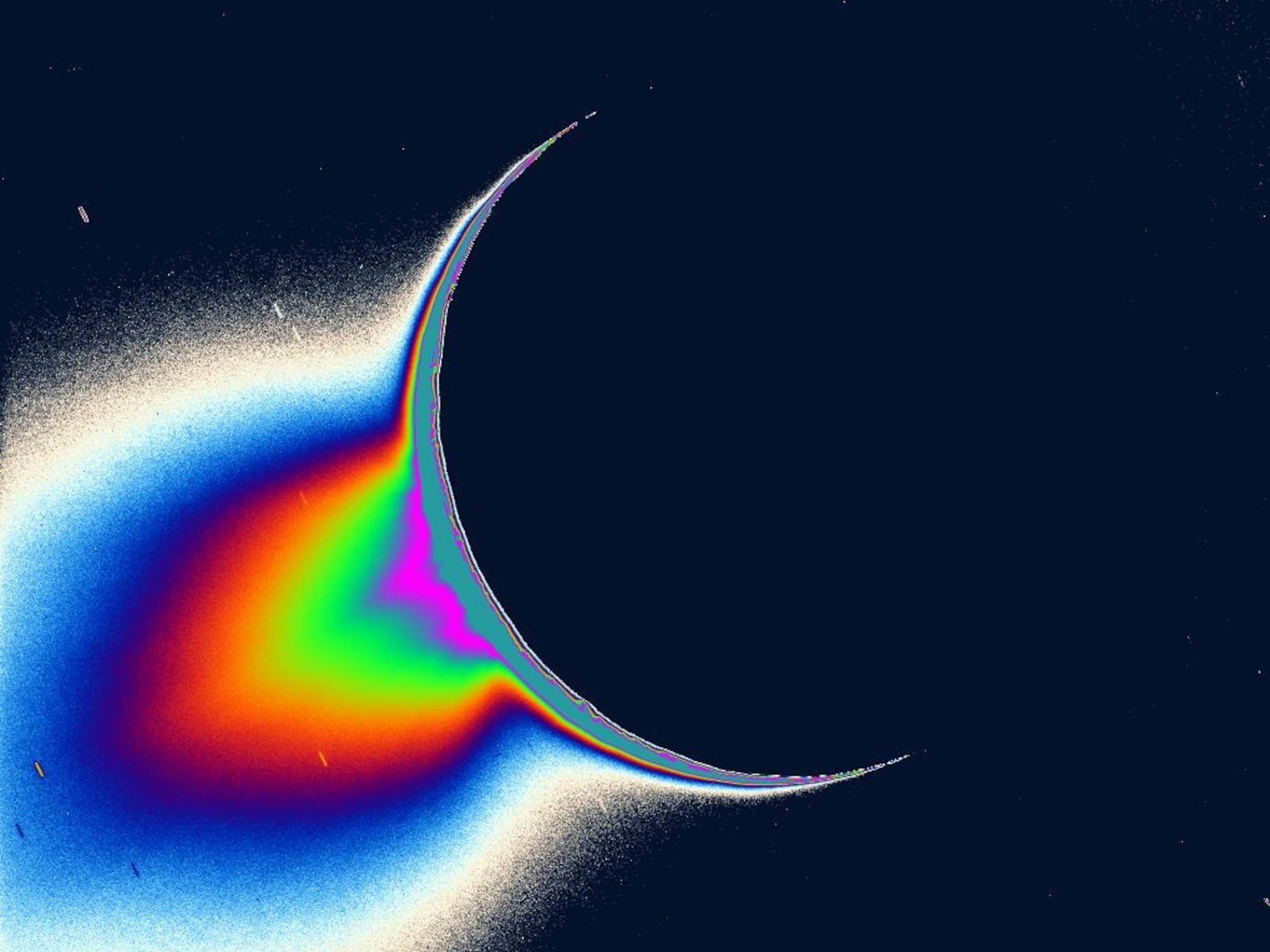On August 18, 1868, astronomers turned their telescopes toward a solar eclipse, not knowing they were about to expand the periodic table.
Their goal was to discern the ingredients of solar prominences, the giant loops of glowing, electrified gas the sun occasionally belted out. When astronomers split the prominences' light into its components, they detected some colors they'd never seen before—the sign of an undiscovered element.
Related: See Photos of the 2017 Total Solar Eclipse
This mysterious gas was helium, a substance so inert and whisper-light that it'd take scientists another 27 years to isolate it on terra firma. You may think of helium as the stuff in party balloons, or the gas that can make your voice squeaky. But helium has revealed itself to have an array of more practical uses, from essential equipment in science labs to common medical scanners and even scuba tanks.
“All kinds of scientific breakthroughs, from the discovery of the Higgs boson to the creation of new pharmaceutical materials, are dependent on helium,” says Mark Elsesser, manager of science policy at the American Physical Society.
While this wonder gas is the second most abundant element in the universe, it's a slippery thing to grab ahold of on Earth. Combine that with a meager supply chain, and you end up with a global helium market that's shockingly fragile. From 2011 to 2013, the helium industry faced shortfalls of 20 percent, leading to crippling shortages.
Now, 150 years after we found out that helium exists, our supply of this precious gas is in turmoil. How can we ensure a sustainable future for helium, a gas so light it can simply drift off into space?
Flea on the Tail
With a boiling point at -452 degrees Fahrenheit, helium's liquid state is the coldest of any element, and it doesn't freeze at everyday pressures, making it the world's best coolant. Superconducting magnets, such as the ones in MRI scanners or crucial pieces of chemistry lab equipment, don't work unless they're bathed in liquid helium. (Here's how scientists are using MRI scans to try and see our dreams.)
And like the other noble gases, helium is inert, making it a valuable addition to manufacturing. Semiconductor makers use helium to help circulate chemical vapors and heat while computer chips get etched. Deep-sea divers breath a mixture of helium and oxygen, which helps them avoid the dangers of “the bends.”
For hundreds of millions of years, the decay of radioactive elements deep inside the planet spawned helium, which meandered its way upward until getting caught in geological formations. The gas is constantly bubbling up; for every 191,000 particles of air swirling around you, one is helium. But the gas is so light, it's one of the few parts of our atmosphere that can easily escape Earth's gravitational pull.
At present, it's unfeasibly expensive to pull it from the air itself, so the helium industry rides fossil fuels' coattails. Practically all of the helium sold today is a byproduct of the natural gas industry, since some of the rock formations that catch hydrocarbons also can stop helium in its tracks. Each year, the world goes through about 6.2 billion cubic feet of helium: enough to fill more than 10,000 giant balloons like the ones you'd see at the Macy's Thanksgiving Day Parade.
Not every deposit of natural gas bears helium, though, and it doesn't always make financial sense for companies to refine their byproduct helium, so we end up with a surprisingly tiny group of key suppliers. Phil Kornbluth, a longtime helium industry consultant, says that only 14 plants on Earth refine helium into liquid form, and they're found in just six countries: Seven of the plants are in the U.S., and the rest are spread across Qatar, Algeria, Russia, Poland, and Australia.
It doesn't take much to send the helium market into a tailspin. Last summer, a coalition of Arab countries blockaded Qatar, ratcheting up diplomatic tensions in the Middle East. It turns out that thanks to its massive liquefied natural gas industry, Qatar has a lot of byproduct helium—so it's now one of the world's biggest helium suppliers. The blockade temporarily knocked out a full 30 percent of the world's helium supply.
“Some people talk about the tail wagging the dog,” says Kornbluth. “We call helium the flea on the tip of the tail of the dog.”
Reserves at Risk
The helium market's core currently lurks underneath Amarillo, Texas. Since the 1920s, the town has been home to the Federal Helium Reserve, a massive underground geological formation that acts as the U.S. strategic supply. Amarillo calls itself the Helium Capital of the World; there's a monument to the element in town, a six-story steel spire with a model of a helium atom at its center.
At its height, the U.S. Bureau of Land Management facility held 30 billion cubic feet of helium, enough to meet 15 years of global demand at the time. But now, the reserve is winding down, after Congress passed laws that will eventually take the U.S. government out of the helium business. In 1996, Congress required the BLM to sell off its helium stores at a fixed rate and then abruptly close in 2013. But instead of closing the reserve, Congress smoothed out its descent in 2013, giving it until September 30, 2021, to sell its helium stores in a series of auctions.
Even now, the helium reserve remains a major player. About 40 percent of the U.S. helium supply still flows through Amarillo, as the reserve sends crude helium to private refineries along a pipeline snaking from Texas to Kansas.
“In the past, we were considered a flywheel—whenever there were impacts in the delivery system, we could ramp up and produce and keep enough helium in the system, where the shortages were short-term,” says Samuel Burton, the field manager at the BLM field office in Amarillo. “Now, as we wind down our program, there really needs to be more helium found, more production created, and more secure delivery systems in place.”
The move to close the reserve worries U.S. scientists. In the last decade, the price of helium has gone up more than 250 percent, dealing a blow to some research budgets. In a 2016 report assembled by three scientific societies, some researchers described forfeiting their summer salaries just so they could afford the helium to do their experiments.
Through a reimbursement system, the Federal Helium Reserve currently lets federal agencies and some large federally funded research labs get subsidized helium from private refiners. William Halperin, a physicist at Northwestern University, gets his helium under the program, and he says that the reserve's closure would be deeply disruptive.
“We're bordering on a non-availability crisis,” he says.
Sustainable Helium?
The U.S. government is aware of the pending problem, and some agencies are working to fix it. The National Science Foundation, for instance, is running a small-scale program to outfit labs with systems that recycle and re-liquify helium.
“This initiative gets people to be aware of [helium] as a true nonrenewable resource,” says Sophia Hayes, a chemist at Washington University in St. Louis who coauthored the 2016 report.
APS's Elsesser thinks that more could be done. He'd personally prefer that the reserve stay open, but regardless, he advocates for royalties on helium sales that could fund recycling technology and research for alternatives to the gas.
New helium plants in Russia and Qatar are coming online in the next few years, but Elsesser and other experts also note that helium is, in some applications, irreplaceable—which makes the need to use it wisely all the more important.
“Industry and scientists are going to be really creative,” says Kornbluth, the industry consultant. “If we get to the point where we just can't keep up with demand, either prices will go up to create new incentives to find more, or we're going to develop substitute technologies that don't rely on helium.”
























